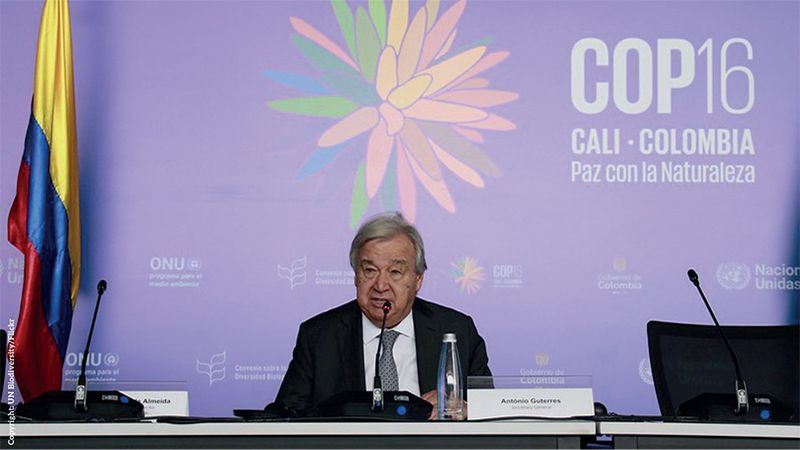The sustainable investment community has expressed its frustration with the conclusion of part one of COP16, where no consensus on nature financing was agreed upon – “the outcome no one wanted”.
Held in Cali, Colombia, the conference ran from 21 October to 1 November, and despite some progress on strengthening the role of Indigenous Peoples and Local Communities in biodiversity efforts, and the launching of the Cali Fund on Digital Sequence Information, leaders fell short on their $20bn annual pledge to protect biodiversity – contributing just $163m during the conference.
See also: COP16: A glass half-empty, or half-full?
“The outcome of COP16 feels like a pause more than progress. Without a cohesive agreement on climate finance, the urgency of our commitments remains unmet,” said Rahul Bhushan, managing director of ARK Invest Europe.
Ingrid Kukuljan, head of impact and sustainable investing at Federated Hermes, added while expectations leading into the summit were modest, the outcomes were “largely underwhelming”.
“It has left many with mixed feelings. Several critical issues have been left unresolved due to persistent tensions between the Global North and South,” Kukuljan added after attending the summit.
Progress was flagged in the launch of the Biodiversity Credits framework principles, and the establishment of a permanent body for Indigenous peoples under the Convention on Biological Diversity, which will allow Indigenous communities to share their knowledge on biodiversity directly. Additionally, a number of countries signed a declaration to accelerate sustainable biodiversity practices and commit to nature conservation.
However, one of the key priorities of COP16 was to establish a new global biodiversity fund, which was not agreed on.
“This is concerning,” said Kukuljan, “as the $200bn per year target set in Montreal remains unmet, leaving a $700bn financing gap for biodiversity by 2030.
“Second, the new framework for monitoring countries’ progress will need to be revisited at an intersessional meeting next year, as only 44 out of 196 parties have released biodiversity plans.”
Ben Allen, director of ESG issues at Principles for Responsible Investment, said he was also pleased to see the strengthening of the role of Indigenous Peoples and Local Communities in biodiversity efforts but called for more concrete action to halt and reverse biodiversity loss.
“The Colombian Presidency, alongside many investors, have shown their commitment to address the systemic risks posed by climate and nature together. While it was encouraging to see updated National Biodiversity Strategies and Action Plans from 44 countries, the absence of an agreed Resource Mobilisation Strategy further delays the crucial investment and private sector commitments required to align financial flows with the Global Biodiversity Framework.
“In order to take effective action, investors require meaningful engagement from policymakers, who hold the most powerful economic levers in creating an enabling environment for private investment. There is a significant amount of work still to be done to ensure we meet the objectives of the Global Biodiversity Framework by 2030 and beyond.”
ARK Invest’s Bhushan added: “To make meaningful strides, finance and actionable frameworks need to be at the heart of these discussions – hopefully, December’s part two will provide the concrete commitments we need to stay on course.”
The second part of the 16th session of the UNCCD COP will take place in Riyadh, Saudi Arabia from 1-13 December 2024.
‘No chance of halting nature loss by 2030’
Meanwhile, NGOs were also critical of the outcome with the CEO of the WWF saying leaders need to be reminded of what’s at stake.
“Despite valiant efforts from Colombia and positive engagement from the UK delegation as well as many others from around the world, this isn’t the outcome anyone wanted. Failure to reach an agreement on financing the Global Biodiversity Framework puts the landmark agreement in jeopardy. Without adequate funding, there is no chance of reaching the goal of halting and reversing nature loss by 2030.
“Let’s not forget what’s at stake here – we stand on the edge of a precipice. If we don’t achieve that goal, we face catastrophic tipping points from which there will be no going back, such as the loss of the Amazon rainforest and death of coral reefs.”








